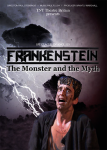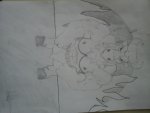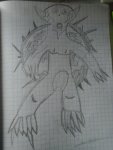
Les classes de 1 CAP A.S., 1 M.S. et TMS sont allées au théâtre des Feuillants voir une pièce de théâtre en anglais.
par Mme Dumont Séverine
Le compte-rendu en anglais de la sortie théâtre a été fait par la classe de 1 CAP A.S.:ils ont trouvé cette pièce plus facile à comprendre grâce à l’interprétation talentueuse des comédiens. Les 1M.S. ont trouvé la pièce utile pour leur projet Etwinning axé sur la comparaison en l’oeuvre originale et ses différentes adaptations. Quant aux terminales, ils ont remarqué la liberté d’adaptation de cette compagnie théâtrale.
On Tuesday 8th January 2019, from 2 o’clock to half past three p.m, we went to the “Théâtre des Feuillants”, rue Condorcet, in Dijon for one hour and a half.
We were 3 classes( 1 A.S ; 1 M.S. and T.M.S.) and 4 accompanying persons= Mrs Zouaghi ;Mrs Bourdeloie ; Mr Belletini and Mrs Dumont, our English teacher.
In the play entitled « Frankenstein », there were 4 actors and the main character was Dr Frankenstein. The music composer was Paul Flush.
The music was composed by Paul Flush.
Here is a summary of the play, in a context of scientific experiment.
This play talks about a scientist, Dr F, tries to ressussitate/revive a corpse . It deals with the creation and life of a monster.
The different parts were : _ the scene between the professor and the student, Victor Frankenstein
_ the meeting with Elizabeth (his wife)
_ Dr Frankenstein’s first experiment : on a monkey= ape, he ressussitates it with a machine and thunder(=foudre).
_ Dr F’s is bitten by a snake that he tried to ressussitate
_ Dr F’s second experiment : he creates a monster with different corpses.
_ The monster is angry/ nervous/ violent and asks a wife to his creator
_ the doctor is arrested by the police for creating a monster
_ the monster kills the woman and goes to the mountain
The key moments were : the creation of the monster and the death of the woman, Elizabeth
The goal of this play was to tell the story of Frankenstein, the novel to learn English in an other way and to do a school outing !
Les TMS quant à eux ont étudié des passages de l’œuvre littéraire et autres passages d’adaptations cinématographiques. Ils ont même imaginé un nouveau monstre moitié homme, moitié animal, avec 5 caractéristiques, un nom et un langage particulier, le tout pour une nouvelle adaptation...leur imagination fut fertile avec des noms de monstres tels que "Donkeychon" (moitié âne, moitié homme), "Mantaurus" (moitié taureau, moitié homme), "Kaplumbaga" (moitié tortue, moitié homme), etc...
Les 1 M.S. travaillent toujours sur leur projet Etwinning avec l’Espagne, chaque élève ayant travaillé en binôme sur une question dont la réponse a été transmise à nos partenaires qui eux ont travaillé sur la route emprunté par le monstre dans le roman de Mary Shelley.
1° make a brief summary of Mary Shelley’s life : https://www.youtube.com/watch?v=Eaw2aQrghck
Thibault et Kenza
2° when did she write « Frankenstein » ? Tony et Lorie
3° when was the book published ? Evan et Médéric
http://www.bbc.co.uk/learningenglish/english/features/drama/frankenstein-ep1
4° Where does the monster come from ? Was he a monster or a hero ? Alexis et Thomas
5° what do we commemorate this year ? Hugo F et Corentin G
6° what adaptations can you find ? Eva et Corentin J
7° what is the link between Frankenstein and Tim Burton ? Sophie et Océane
8° what is the link between this novel and the Gothic tradition ? Brice et Hugo M.
9° what is the link between the novel and sciences ? Théo et Maxime
10° can you find other examples of monsters in literature ? Morgane et Emilie
11° look for information on Frankensweenie (Samuel et Margot). and Frankensfood (David et Rudy)
Dans la même rubrique
0 | 5
par Mme Dumont Séverine
par Mme Dumont Séverine
par Mme Dumont Séverine
par Mme Dumont Séverine
par Mme Dumont Séverine


 Accueil
Accueil






 Plan du site
Plan du site
